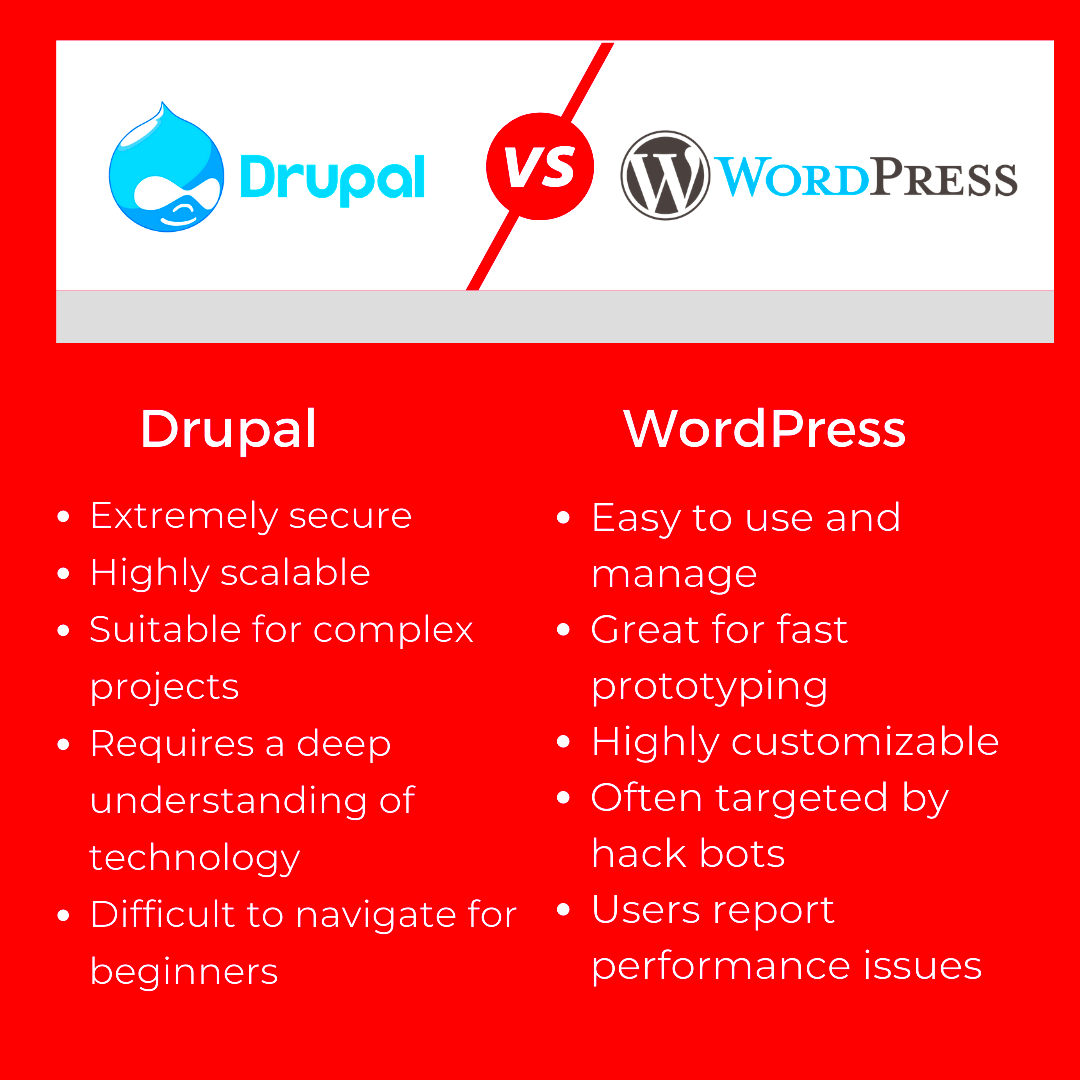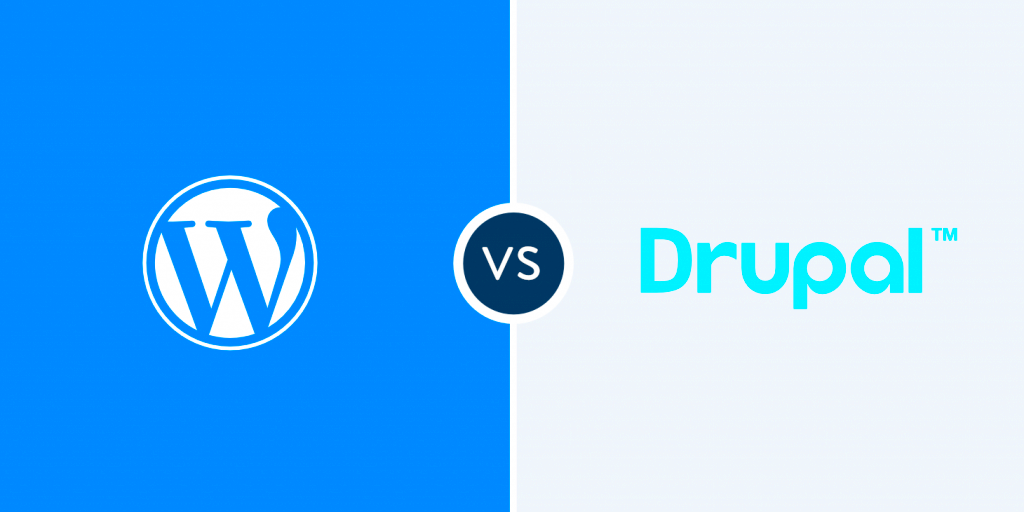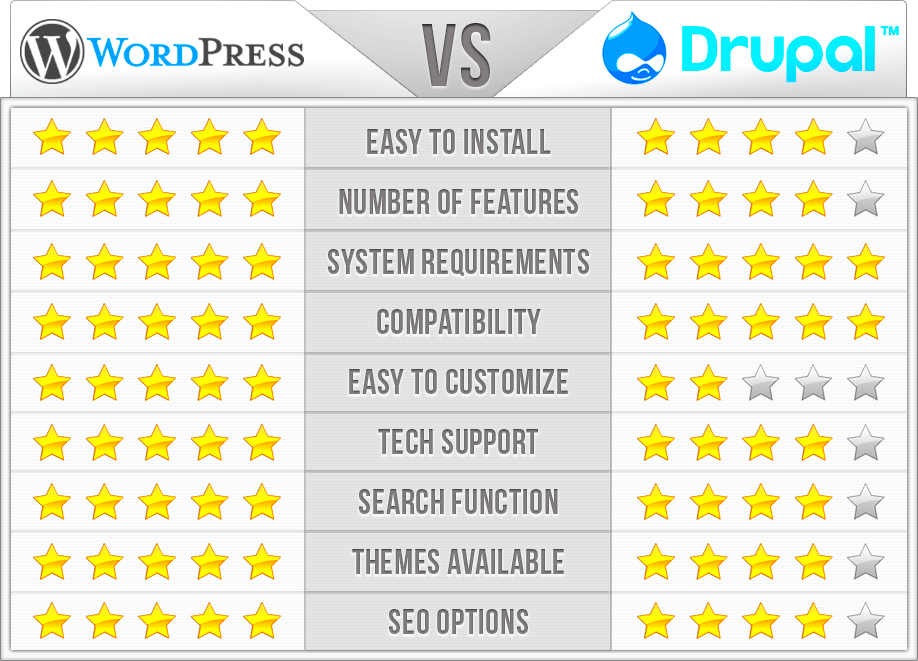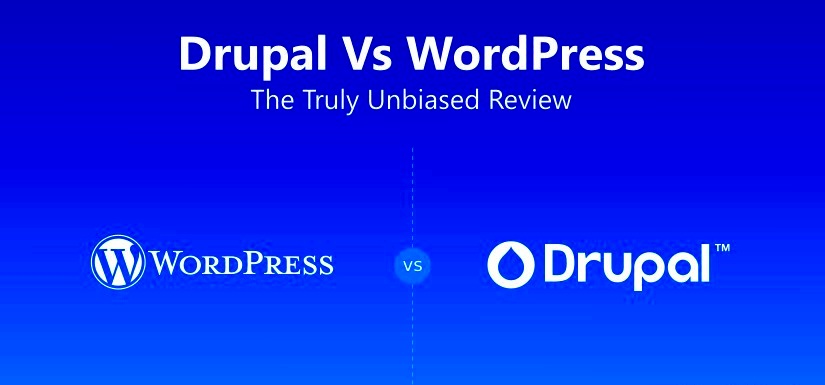When it comes to content management systems (CMS), two names often take the spotlight: Drupal and WordPress. Both platforms have carved out significant spaces in the digital landscape, but they serve different needs and users. While WordPress is famously user-friendly and favors blog-like structures, Drupal offers a robust framework for those seeking deeper customization and scalability. In this post, we’ll dive into what makes Drupal stand out, especially if you’re looking for flexibility and customization in managing your content.
Flexibility and Customization

One of the standout advantages of Drupal over WordPress is its unparalleled flexibility and customization capabilities. Here’s why Drupal often steals the show when adaptability is on the table:
- Content Types: Drupal allows you to create diverse content types tailored to your specific needs. Whether it’s articles, events, or products, you can establish custom fields to manage any data you want.
- Taxonomy: The taxonomy system in Drupal lets you organize and categorize your content efficiently. By creating an intricate hierarchy of tags and categories, you can ensure your content is easily discoverable.
- User Roles and Permissions: With Drupal, you can set up detailed user roles and permissions. Whether you’re managing a small team or a large organization, you can control who sees or edits what, making it ideal for collaborative environments.
- Custom Themes: Unlike WordPress’s template-based design, Drupal allows you to create highly customized themes from the ground up. This means your site can have a unique look and feel that truly represents your brand.
- Modular Architecture: Drupal’s modular structure means that you can build and expand your site incrementally. You can add modules as your needs evolve, providing a tailored experience without overhauling your entire system.
Overall, if flexibility and customization are top priorities for your content management needs, Drupal offers a robust platform that empowers you to create exactly what you envision.
Scalability for Large Websites

When it comes to building and maintaining large websites, scalability is a crucial factor that can make or break your project. While both Drupal and WordPress offer some level of scalability, Drupal is frequently lauded for its superior capabilities in this area, especially when managing complex sites with extensive content and high traffic.
One of the main reasons behind Drupal’s scalability is its robust architecture. The platform is designed to handle large volumes of data efficiently. This means that as your website grows—be it in terms of pages, users, or traffic—Drupal can scale without skipping a beat. Here are some key features that contribute to Drupal’s scalability:
- Custom Content Types: With Drupal, you can create custom content types tailored to your business needs, enabling you to efficiently manage the specific types of content your large site requires.
- Taxonomy System: Drupal’s taxonomy system allows for complex categorization, making it easier to manage vast amounts of content.
- Performance Optimization: Drupal comes equipped with caching capabilities that help your website maintain speed even when it’s under pressure.
- Distributed Systems: If your site requires even more power, Drupal can be integrated into a more complex architecture, including load-balanced environments and cloud services.
In summary, if you envision encountering rapid growth or if you’re already dealing with a large site, Drupal offers a flexibility that can seamlessly grow with your needs, ensuring that you won’t have to migrate your platform down the line.
Advanced User Roles and Permissions

Managing user access is a big deal, especially if your website has multiple contributors, editors, or administrators. In this arena, Drupal shines with its advanced user roles and permissions capabilities, providing a level of granularity that is simply unmatched by WordPress.
Drupal allows you to create a variety of user roles, each assigned distinct permissions. This means you can precisely control who can do what on your website. Here’s how this works in practice:
- Custom Roles: You can create as many roles as you need—be it Editor, Contributor, or Moderator—each with specific capabilities such as creating, editing, or publishing content.
- Granular Permissions: You can assign permissions at a very detailed level. For instance, one editor might be able to publish posts, while another can only save drafts.
- Permissions by Content Type: Beyond the user roles, you can set permissions specifically for different content types, allowing for even more control over who can access what.
- Content Workflow: Drupal supports advanced workflows that allow for an effective content approval process, perfect for larger teams working collaboratively.
Overall, Drupal gives you a comprehensive toolkit to manage complex user interactions effectively, making it ideal for organizations where controlled access is crucial. With Drupal, you’re in charge, and your content is secure.
Robust Taxonomy and Content Organization
When it comes to managing content, the way you organize it can make all the difference. Drupal shines bright in this category with its robust taxonomy system. But what does that really mean for you as a content manager or a website owner?
First off, Drupal allows for an intricate categorization of content through its taxonomy system. You can create custom vocabularies and assign terms to your content types, enabling you to structure your content in a way that best suits your needs. This level of flexibility allows for more precise content classification, which is particularly beneficial for organizations with large volumes of content.
Here’s a quick breakdown of what makes Drupal’s taxonomy a powerhouse:
- Hierarchical Structure: You can build nested categories, allowing for multiple layers of content organization.
- Custom Taxonomies: Create vocabularies tailored to your project, making it easier to manage diverse content types.
- Easy Content Filtering: Users can quickly filter through content based on taxonomy terms, improving user experience.
- Views Module Integration: Combine with Views to create custom displays of your content based on taxonomy terms.
This granular approach to content organization doesn’t just make your site user-friendly; it also enhances SEO. By structuring your content effectively, search engines can crawl your site more efficiently, leading to better visibility online.
Overall, if you’re looking to manage extensive content with precision, Drupal’s robust taxonomy and content organization features are hard to beat.
Security Features and Compliance
In a world where cyber threats are rampant, the security of your website should be a top priority, and here is where Drupal steps up to the plate. Drupal has a reputation for being one of the most secure content management systems available, favored especially by government agencies and corporations that require high compliance standards.
One of the standout features of Drupal is its built-in security framework. The Drupal community is highly proactive when it comes to identifying and addressing vulnerabilities. This means you can sleep a little easier knowing that your site is backed by a dedicated team of experts who consistently monitor for issues.
Here are several notable security aspects of Drupal:
- Regular Security Updates: Drupal releases updates frequently, fixing vulnerabilities and improving overall site security.
- Granular User Permissions: Control who can view, edit, or manage different content types to minimize potential risks.
- Secure Coding Practices: Drupal promotes secure coding practices and provides resources to help developers strengthen their installations.
- Role-Based Access Control: Assign specific roles to different users, ensuring that sensitive information is only accessible to those who need it.
Moreover, Drupal is compliant with various standards and regulations, such as GDPR and PCI DSS, making it a suitable choice for organizations that need to adhere to strict compliance requirements. This is especially crucial for eCommerce sites or any organization that handles sensitive user data.
In summary, if security and compliance are paramount to your content management strategy, Drupal’s robust features offer peace of mind and a solid foundation for your web presence.
7. Built-In Caching and Performance
One of the standout features of Drupal is its built-in caching capabilities, which can significantly boost the performance of your website. Caching is essentially the storage of frequently accessed data in a way that makes it quicker to retrieve later. This means that when your visitors return or a new visitor arrives, the content loads faster, resulting in a smoother user experience.
Drupal provides various caching mechanisms, tailored to different needs:
- Page caching: This stores the full HTML of a page after it’s been rendered, so it can serve subsequent requests directly from the cache instead of reprocessing the page.
- Block caching: Similar to page caching, but this allows you to cache individual blocks of content. This is particularly useful for dynamic content that may not change on every page load.
- Entity caching: Drupal caches data entities such as nodes, users, and taxonomy terms, ensuring faster access without frequently querying the database.
Beyond caching, Drupal’s performance can be further optimized through the use of modules and tools that manage resources effectively. Many Drupal sites can handle high traffic with ease, thanks to features like:
| Performance Feature | Description |
|---|---|
| HTTP Caching | Leverages browser caching to minimize server load. |
| Database Optimizations | Efficient database queries that reduce load times. |
| Content Delivery Network (CDN) Integration | Works seamlessly with CDNs to deliver content faster by caching static files closer to users. |
All of these elements contribute to making Drupal a powerhouse when it comes to site performance, especially for content-heavy and high-traffic sites. So, if speed is a priority for your project, Drupal’s caching capabilities might just make it the perfect choice.
8. Better Multilingual Capabilities
As our world becomes increasingly interconnected, the need for multilingual websites is more important than ever. Drupal shines in this area, offering robust tools that make it easier to create websites in multiple languages. Whether you’re serving a global audience or catering to localized communities, Drupal has you covered.
With features specifically designed for multilingual support, here’s what makes Drupal stand out:
- Multilingual Modules: Drupal comes with built-in translation capabilities and a range of modules like Locale, Content Translation, and Interface Translation. These modules simplify the process of translating different types of content.
- Language Management: You can effortlessly manage multiple languages for your website. This includes selecting default languages, adding new ones, and even configuring language detection based on user preferences or IP addresses.
- Dynamic Content Translation: Drupal enables dynamic translation of content types, fields, and taxonomy terms, ensuring that everything on your site is accessible to all users, regardless of their language.
In fact, Drupal’s multilingual capabilities aren’t just about translating text. They extend to:
| Feature | Description |
|---|---|
| Content Workflow | Manage content creation and translation workflows efficiently, ensuring timely delivery for multilingual content. |
| User Interface Localization | Customize the user interface to reflect different languages, making navigation easier for users across diverse language backgrounds. |
| Translation Management | Integrates with external services or tools for translating large volumes of content, further streamlining the translation process. |
When it comes to accessibility and reaching a broader audience, Drupal’s multilingual capabilities provide the flexibility and tools needed for effective communication. So, if you’re aiming to serve a diverse audience, Drupal may very well be your best bet!
9. Community Support and Resources
When it comes to choosing a Content Management System (CMS), community support can be a game changer. Both Drupal and WordPress have robust communities, but Drupal’s community often shines in a few key areas that can really benefit users.
One of the standout advantages of the Drupal community is its emphasis on professional relationships. The core developers and contributors are frequently industry experts, which means they bring a wealth of knowledge and innovation to the platform. This creates a unique environment where users can access high-quality resources and support.
In particular, Drupal offers:
- Comprehensive Documentation: The official documentation is extensive and covers a wide range of topics from installation to advanced development techniques.
- Forums and Discussion Groups: Active forums, such as Drupal.org, provide a space for users to share experiences, ask questions, and seek advice.
- Meetups and Conferences: Regularly scheduled meetups and events like DrupalCon enable users to connect face-to-face, expanding their networks and learning from one another.
- Themes and Modules Repository: Drupal offers a vast collection of themes and modules through its marketplace, with community support that frequently tests and reviews these tools.
While WordPress is undoubtedly popular and has a large following, Drupal’s community tends to focus more on professional development, making it a solid choice for those looking to use the platform for business or advanced projects. The wealth of resources, networking opportunities, and quality support make Drupal a compelling option for individuals and organizations alike.
10. Conclusion: Choosing the Right CMS for Your Needs
At the end of the day, choosing between Drupal and WordPress depends on your particular needs. If you’re someone who values ease of use, quick setup, and a plethora of plugins, WordPress might be your best bet. It’s user-friendly and perfect for bloggers, small businesses, and anyone looking to get started quickly.
On the other hand, if your project demands higher levels of customization, security, and scalability, Drupal could be the better option. It’s designed to handle complex, large-scale websites and provides unparalleled flexibility to developers. Here are a few factors to consider:
| Factors | Drupal | WordPress |
|---|---|---|
| Complexity | More complex setup and configuration | Easy and intuitive for beginners |
| Flexibility | Highly customizable with extensive options | Flexible but limited by available plugins |
| Scalability | Ideal for large-scale projects | Best suited for smaller to medium sites |
| Community Support | Strong focus on professional development | Vast community but less professional networking |
Ultimately, it’s crucial to assess your goals, technical expertise, and future needs when choosing a CMS. Remember, the best platform for you is the one that aligns perfectly with your vision and operational requirements. Take your time, explore both options, and make a decision that will serve you well in the long run!



